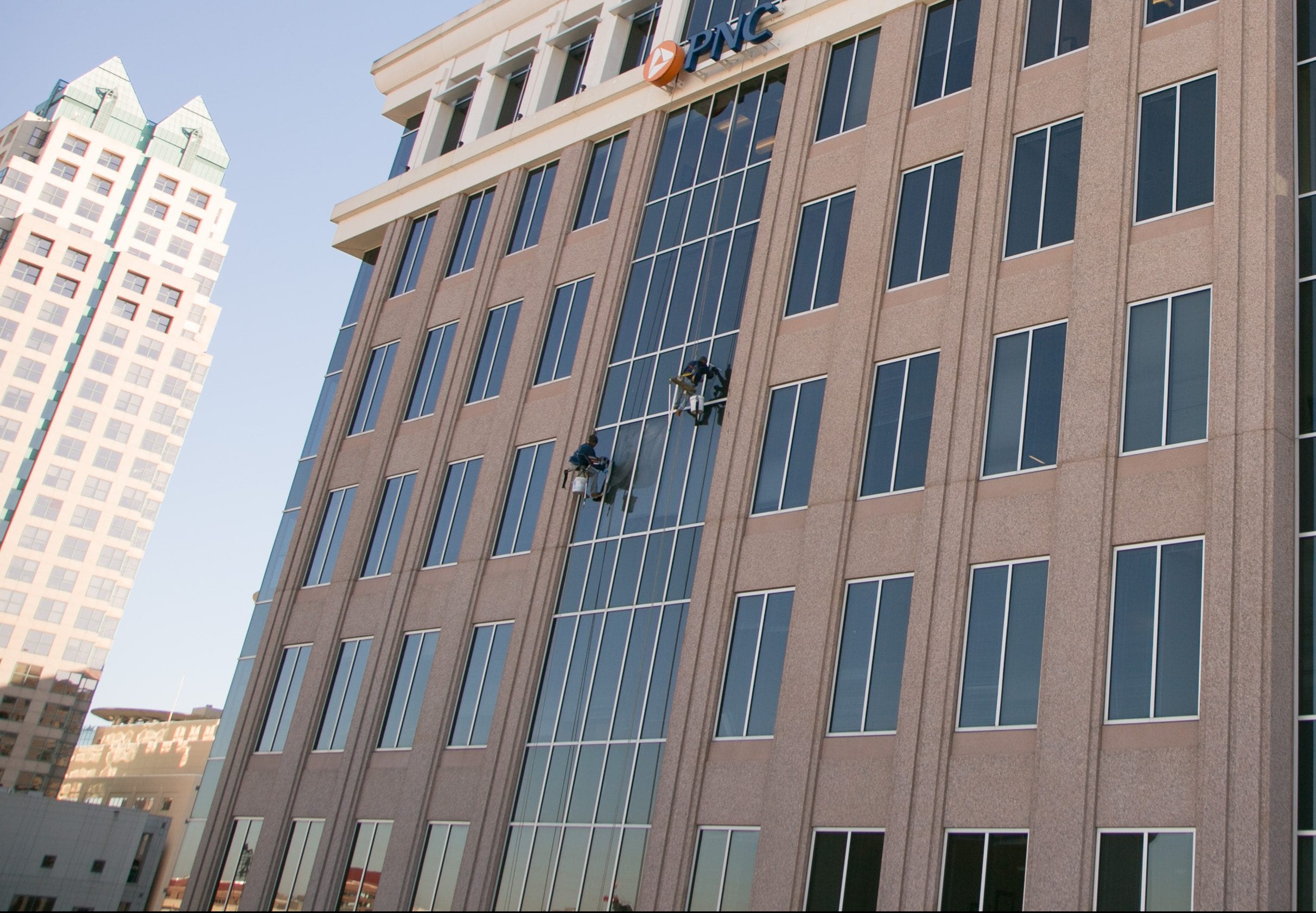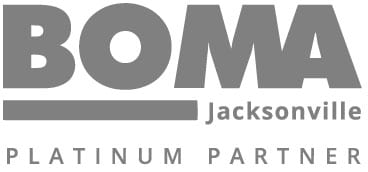As early as the 1950s, a method of improving construction practices and reinforcing concrete emerged in the United States. The post-tensioning (or post-stressing) concrete method provides outstanding durability, increased design flexibility, and improved safety. This method also came the need for specialized concrete restoration and repair services.
Many modern office buildings, commercial and residential towers, parking structures, and facilities rely on post-tensioned concrete. Keeping up with commercial building repair is critical as neglected upkeep leads to catastrophic building collapses, much like the Surfside Condo collapse in Florida in 2021- an event that claimed the lives of nearly 100 people. Due to the rising demand for post-tensioning, planning repair work on post-tension slabs and components is increasingly vital for commercial building maintenance. Commercial building managers and facility maintenance teams cannot afford to overlook understanding how to spot issues quickly and handle post-tension repair needs.
What is Post Tension Repair?
Post-tensioning is a highly specialized and advanced means for reinforcing concrete, making it more suitable for commercial applications, heavy load-bearing designs, and larger building structures. According to the Federal Highway Administration, “the tensile strength of concrete is only about 10% of its compressive strength.” As a result, plain concrete members are likely to crack when loaded. However, embedding reinforced steel into the concrete members helps them accept tensile stresses that plain concrete cannot. Reinforced steel is selected assuming that the tensile zone of the concrete carries no load and that tensile stresses are resisted only by tensile forces in the reinforcing bars. The resulting reinforced concrete members may crack but can effectively maintain the design loads.
The forces within post-tensioning tendons demand that owners, designers, and contractors who maintain these structures understand the dos and don’ts of repair and maintenance to keep their structures safe.
Highly advanced design elements require specialized skills and a high level of technical knowledge to ensure the structure’s safety and that of individuals working around the structure. Properly implementing a post-tensioning system repair plan is vital to maximizing longevity and ensuring the structure remains safe and stable for as long as possible. Ultimately, post-tension repair work focuses on identifying and fixing issues involving concrete in slabs, support beams, columns, foundations, and more.
How Do You Know if Your Building Needs Post Tension Repair?
Post-tension concrete repair should begin as soon as issues become apparent. The longer the delay in repair, the more expensive the repairs will become. Concrete is popular because of its durability, but it’s also susceptible to cracks, chipping, and other issues. Routine checks and inspections are critical for building maintenance and upkeep if a commercial concrete structure utilizes post-tensioning.
Inspections of post-tensioned concrete structures should include the following regularly:
- Visual inspection of facilities and critical problems areas – joints, support junctions, and large expanses
- PT Corrosion Evaluation and regular moisture testing, especially in areas with high water intrusion risks
- Chloride analysis of PT grout to avoid long-term exposure and corrosion of steel cables and casings
- PH and chemical testing of structure to ensure no oxidation and to monitor accumulation on surfaces
- Petrographic analysis, Scanning Electron Microscopy examination, and other tech-backed inspections
- Cable Break Detection services to monitor tension support and durability on an ongoing basis
- Regular feedback and communication between team members and staff about noted issues or concerns
While it is a valuable material and commodity for commercial construction, post-tension concrete requires a more specialized approach to maintenance and upkeep. Working with post-tension repair contractors and finding a repair management company specializing in post-tension concrete services are critical to keeping buildings in good standing. Working with industry experts makes the process easier, whether it concerns repairing a post-tension slab or maintaining building components correctly.
Common Concrete Challenges Requiring Post-Tension Repair
All buildings degrade and break down over time, but there are a few potential issues that can affect post-tension concrete more than others. Using post-tension repair services can help reduce common concrete problems and make commercial building services easier to manage. Some common issue items include:
- Cracks in the concrete foundation or support structures
- Uneven floors and shifting concrete in large expanse areas
- Cracking grout lines or signs of separating and peeling concrete
- Leaning chimneys or other structures supported by the post-tensioned system
- Loose or damaged components expose the tensioning system
- Chipping of concrete in critical support and expanse areas
- Signs of flaking, rusting or breaking down of concrete structures
- Advanced age of the structure or long periods since the last inspection or repair work
Building owners should have these areas periodically examined periodically by a qualified structural engineer for post-tension repair. The condition survey will check for potential problem areas, note any procession of damage, make recommendations for repair and maintenance, and work with your team to start the necessary steps to address issues.
What Causes Degradation in Post-Tensioned Structures?
Maintenance and upkeep are vital for a post-tensioned structure’s continued service and longevity. Structural deterioration due to exposure to moisture, corrosive elements, and the simple passage of time can lead to a loss of structural integrity, causing issues with structural safety and stability.
Most instances of repair and maintenance work on post-tensioned structures come down to one of the following concerns, all of which a post-tension repair company can assist with:
- Voids and air pockets within the concrete structures create weak points
- Trapped moisture between strands and between wires within the structure
- Water seeping into the structure through cracks in building envelope seals
- Grout segregation, deterioration, or breakdown goes unchecked
- Water penetration from anchorage pockets, joints, cracks, flashing, and seals
- Water penetration due to floods, roof damage, plumbing issues, or leaky windows
- Chloride-contaminated grout and exposure to other corrosive chemicals
- Dissimilar grouts used in the same tendon create chemical reactions
- Improper installation of post-tension cables and anchors during construction
- Poor maintenance and upkeep early on in the lifespan of the structure
- Damages and concerns left unchecked and unaddressed for too long
Like all building materials, post-tensions concrete offers advanced benefits and features, but it is not perfect and still requires routine checks and maintenance work. Keeping up with this is vital to commercial concrete building construction and upkeep.
Debunking Myths Around Post-Tensioning and Repair
Post-tension concrete’s popularity also comes with various myths that can cloud judgments and impact maintenance protocols. The following are some of the most common myths that repair experts encounter when working with commercial maintenance teams.
MYTH: It is difficult to cut holes and add features to post-tensions slabs and structures.
REALITY: Post-tensioned structures are just as doable and can be easily customized. In this regard, there is not much difference between typical concrete structures and post-tension concrete. Tendon layouts can allow for future aesthetics or building repair needs.
MYTH: Parking garages and structures are more expensive when made with post-tensioning.
REALITY: Keeping long-term budgets in mind when comparing material and construction costs is crucial. While upfront costs for a post-tensioned system might be more, it will require less maintenance and upkeep and save management money in the long run.
MYTH: Post-tensioned buildings experience more shortening than they would otherwise.
REALITY: All concrete will experience some degree of shortening due to the nature of concrete building materials. It is inherent in the curing process as it will shrink, and there is no stopping it. Contractors control building geometry, and post-tensioning is no more prone to shrinking.
MYTH: Post-tensioning is not possible with below-grade applications.
REALITY: Below-grade applications are structures located below the main building. Post-tensioning concrete can be used in these cases quickly. Benefits of below-grade applications include less cracking, improved durability, thinner slabs, and easier excavation.
MYTH: It is always better to use more post-tensioning.
REALITY: Post-Tensioning is no compensation for sloppy design and is no cure-all. Excessive use can lead to overbalancing effects -deflection problems, cracking, shifting, bowing, or severe blowouts, all of which can be costly to fix. Too much of a good thing can be a bad thing.
Why Working with A Commercial Building Services Provider for Post Tension Repair
Ensuring commercial building repair and proper maintenance of post-tension concrete structures remains an essential part of facility management. Building owners and managers cannot afford to overlook even minor issues with structural integrity. Failure can lead to catastrophic building collapse, loss of life, and severe property damage. With post-tensioned systems showing up everywhere, repair work on the systems has become increasingly vital for commercial building maintenance. Contact The A1orange Group today to learn more and find support with a leading post-tension company.






